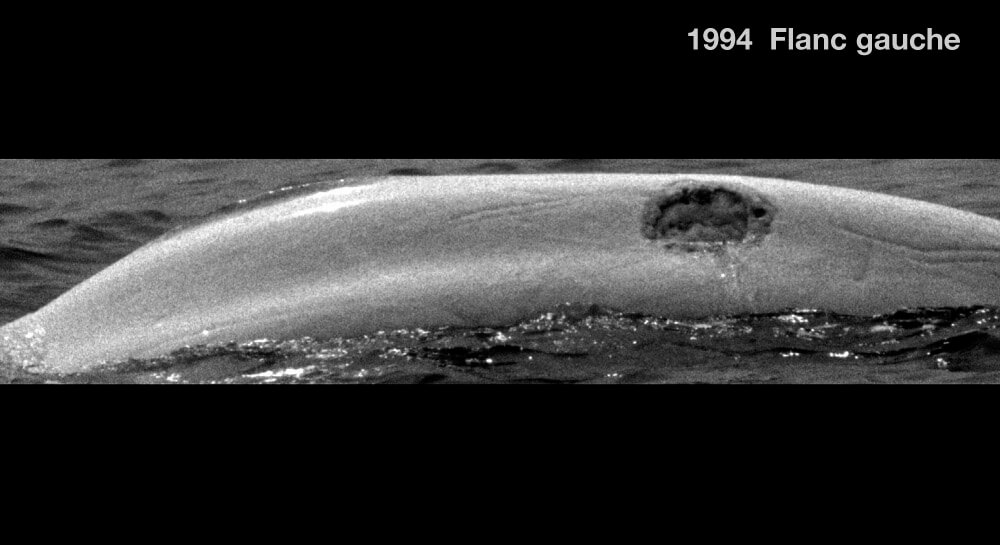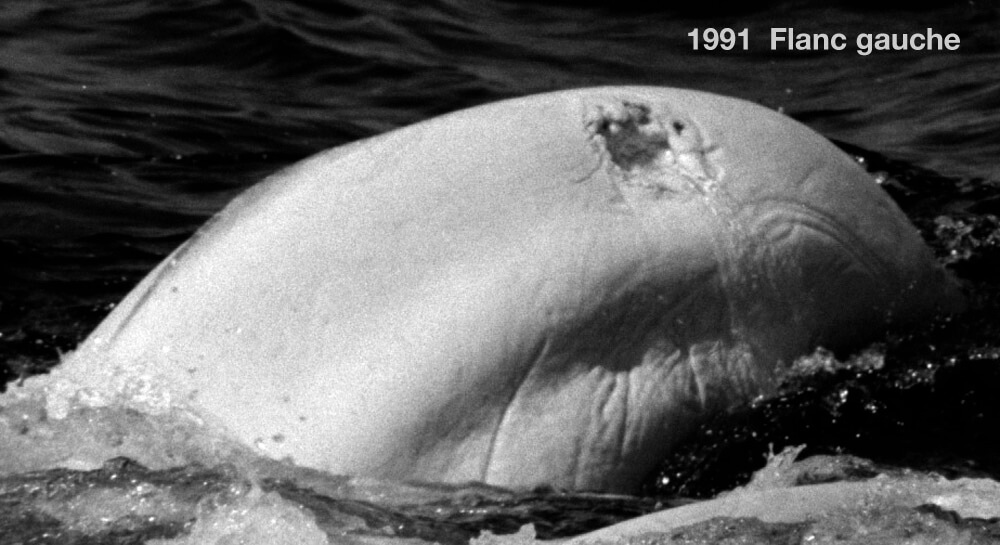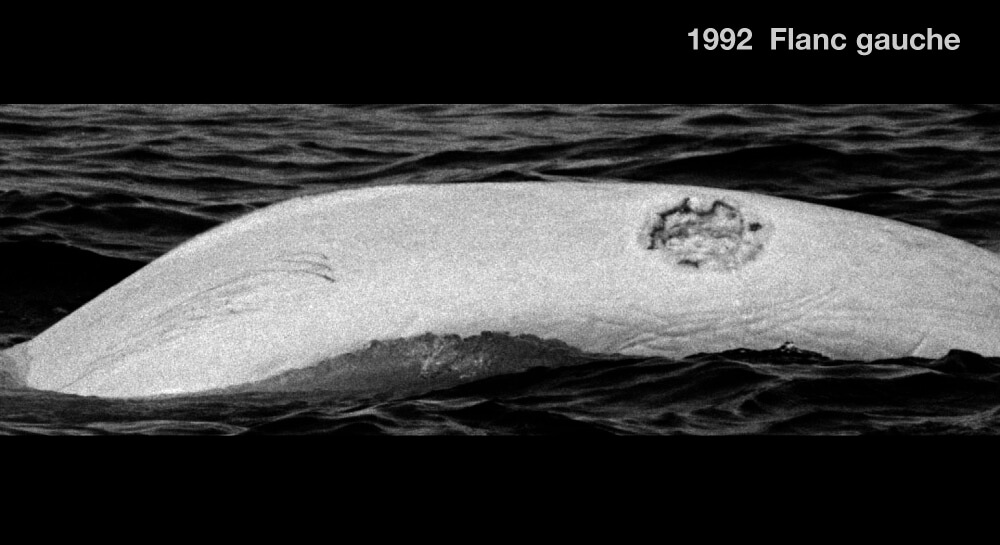Biscuit
Beluga


Adopted by École de langue française de Trois-Pistoles
-
ID number
DL0057
-
Sex
Unknown
-
Year of birth
Before 1973
-
Known Since
1987
Distinctive traits
Biscuit is known only from the left flank. The large, deep and intricate peduncle scar distinguishes this individual from the others.
Life history
When we first met Biscuit in 1987, this beluga was slightly gray. From 1993 onwards, though this individual was always noted as white, meaning the date of birth for this beluga would have been around 1973.
For the moment, based on Biscuit’s associations and habits, we can’t confirm this individual’s sex or summer range. Adult belugas are highly sex-segregated in summer. Males and females show clearly marked preferences, both in their associations and in the areas they frequent. In juveniles and young adults, this behavior is not as marked.
On a few occasions, the team heard Biscuit’s “voice”. Along with the other belugas present, this individual vocalized at the surface, sticking its head and tail out of the water. Whistling, snapping, squeaking and growling, the beluga’s vocal repertoire is very extensive, hence its nickname “the canary of the seas”. This repertoire may be an adaptation to life near the ice, where ambient noise is omnipresent.
Observations history in the Estuary
Years in which the animal was not observed Years in which the animal was observed
Latest news
Sponsor
École de langue française de Trois-Pistoles adopted Biscuit (1990).


